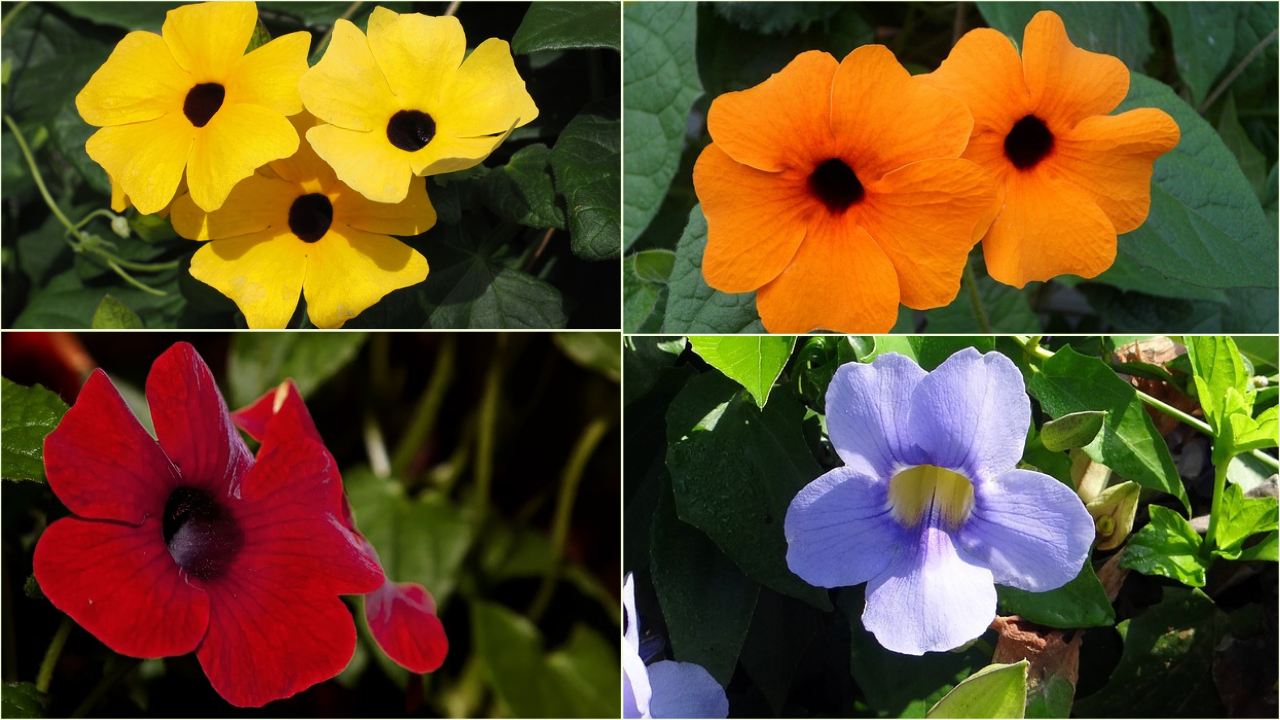Transform your garden with Thunbergia! Discover the best planting techniques for lush blooms from seed to flowering vine.
1. Introduction to Thunbergia Plant
What is Thunbergia?
Thunbergia is a genus of flowering plants in the Acanthaceae family native to tropical regions of Africa, Asia, and Madagascar. There are over 100 species of Thunbergia, ranging from vines and shrubs to perennials and annuals. The most popular species for garden cultivation is Thunbergia alata, known for its striking flowers and rapid growth.
Why plant Thunbergia?
Thunbergia offers a multitude of benefits to gardeners. Its fast growth rate and prolific flowering make it ideal for quickly covering fences, trellises, and arbors, providing instant color and interest to any garden space. Additionally, Thunbergia attracts pollinators such as bees and butterflies, making it a valuable addition to any wildlife garden.
2. Choosing the Right Thunbergia Variety
Popular varieties
Thunbergia comes in a variety of colors, including shades of yellow, orange, white, and pink. Some popular varieties include:
- Thunbergia alata (Black-eyed Susan vine): Known for its bright orange or yellow flowers with dark centers.
- Thunbergia grandiflora (Blue Sky vine): Recognized for its large, sky-blue flowers and vigorous growth habit.
- Thunbergia mysorensis (Clock vine): Noted for its pendulous, red and yellow flowers resembling hanging clocks.
Considerations for selection
When choosing a Thunbergia variety for your garden, consider factors such as your climate, available space, and desired color scheme. Additionally, consider whether you prefer a trailing or upright growth habit, as this will determine how you plant and support your Thunbergia.
3. Ideal Growing Conditions
Sunlight requirements
Thunbergia thrives in full sun to partial shade, preferring at least six hours of sunlight per day for optimal growth and flowering. However, it can tolerate some shade, especially in hot climates where intense sunlight may cause leaf burn.
Soil preferences
Thunbergia prefers well-draining soil with a slightly acidic to neutral pH. Amend heavy clay soils with organic matter such as compost or peat moss to improve drainage and fertility.
Watering needs
Water newly planted Thunbergia regularly to establish a strong root system, then reduce watering frequency once established. Allow the soil to dry slightly between waterings to prevent root rot and other moisture-related issues.
4. Planting Thunbergia
Preparing the soil
Before planting Thunbergia, prepare the soil by loosening it to a depth of 6-8 inches and incorporating organic matter such as compost or aged manure. This will improve soil structure, fertility, and drainage, providing a healthy growing environment for your Thunbergia.
Planting techniques
Plant Thunbergia seedlings or cuttings at the same depth as they were growing in their nursery containers, spacing them according to their mature size and growth habit. Water thoroughly after planting to settle the soil around the roots and reduce transplant shock.
5. Caring for Thunbergia
Watering schedule
Once established, Thunbergia is relatively drought-tolerant and requires minimal watering. However, during periods of prolonged drought or extreme heat, water deeply and consistently to prevent wilting and stress.
Fertilization tips
Feed Thunbergia with a balanced, slow-release fertilizer in early spring to promote healthy growth and flowering. Avoid over-fertilizing, as this can lead to excessive foliage growth at the expense of flowers.
Pruning guidelines
Prune Thunbergia regularly to control its size and shape, removing dead or damaged growth and cutting back any overly vigorous shoots. Pruning encourages bushier growth and more prolific flowering, keeping your Thunbergia looking neat and tidy throughout the growing season.
6. Managing Pests and Diseases
Common pests affecting Thunbergia
Thunbergia is relatively pest-resistant but may occasionally be affected by aphids, spider mites, or whiteflies. Monitor your plants regularly for signs of infestation, such as distorted growth or yellowing leaves, and treat promptly with insecticidal soap or neem oil.
Preventive measures
To prevent pest and disease problems, practice good garden hygiene by removing debris and weeds from around your Thunbergia plants. Additionally, avoid overcrowding and overwatering, as these conditions can promote fungal diseases such as powdery
Conclusion
Thunbergia is a versatile and easy-to-grow plant that can bring beauty and charm to any garden or landscape. With the right care and attention, you can enjoy the vibrant colors and lush foliage of Thunbergia throughout the growing season. Whether you're a beginner gardener or an experienced enthusiast, Thunbergia is sure to delight with its abundant flowers and attractive growth habit.

FAQs
-
How fast does Thunbergia grow?
Thunbergia is known for its fast growth rate, especially in warm climates. Under ideal conditions, it can grow several feet in a single growing season. -
Can Thunbergia survive in shade?
While Thunbergia prefers full sun, it can tolerate partial shade, especially in hot climates where intense sunlight may cause leaf burn. -
How often should I fertilize Thunbergia?
Fertilize Thunbergia once a month during the growing season with a balanced, slow-release fertilizer to promote healthy growth and flowering. -
What pests commonly attack Thunbergia?
Common pests that may affect Thunbergia include aphids, spider mites, and whiteflies. Monitor your plants regularly and treat promptly to prevent infestations. -
Can Thunbergia be grown indoors?
Thunbergia can be grown indoors in containers as long as it receives sufficient sunlight and proper care. Choose a compact variety and provide support for climbing stems.


1 comment
Anthony Pereira
Are these seeds available and how many colors ?